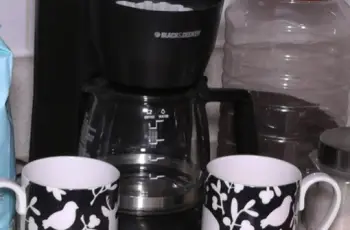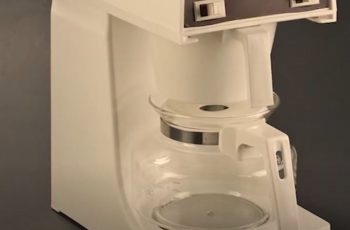Enjoying a warm cup of coffee throughout the day might lead you to question whether it’s alright to keep your coffee maker on all day long. You might also be curious about whether the coffee will remain delicious after being heated for so long. Additionally, you’re likely interested in finding out the amount of electricity it uses while it remains plugged in.
You’re curious whether your coffee maker can automatically shut off to avoid fire hazards. You might also wonder if you need to unplug the coffee maker whenever not in use. In this post, you’ll find a clear answer to all your questions.
Why I Should Unplug My Coffee Maker
Your coffee maker can remain plugged in when not in use without posing a fire hazard. Your coffee maker will cost you about $1 a day if you leave it plugged in 24 hours a day, 365 days a year. Saving this much does not motivate you to change.
If you consider other small and large appliances that can be unplugged as well, you could end up saving several dollars to a few tens of dollars each year by turning them all off when not in use.
Is A Coffee Maker Safe To Leave On All Day
It is not a good idea to leave a coffee maker on all day. Leaving them on for an extended period can pose a potential fire hazard. You may burn flammable objects near your coffee maker. Burns might occur near the coffee maker and can even damage the counter.
Coffee makers are not designed to keep coffee warm all day long. Electrical wiring can also be damaged when they are heated for extended periods. It could break your coffee maker or cause a house fire. It is better to use a container to keep the coffee warm, such as a thermos.
What Happens To A Coffee Maker If I Leave It On
There is a high probability of the coffee pot getting burned. Although caffeine is soluble in water, it will not evaporate. In this way, coffee thickens after being heated for several hours. A thickened coffee is likely to burn at the bottom of the pot. Even a burned coffee pot isn’t the worst thing that can happen to you. You risk causing nearby items to catch fire or damaging your coffee maker’s wiring.
No matter what your reasons are for staying safe or having a great cup of coffee, you should not leave your coffee maker on all day. The average coffee maker consumes about .08 kWh of electricity per cup. It costs one cent to make a pot of coffee with a cost of approximately 0.13 per kWh.
When not in use, a coffee maker uses about 1 watt of energy per hour. It is the amount of electricity the coffee maker uses when plugged in, but not used. For the entire year, the coffee maker will cost a little over a dollar at the average rate of 13 cents per hour.
Fire Prevention For A Coffee Maker
You should not let your coffee maker run for more than 2 hours. One thing that you can do is invest in a coffee maker that will automatically switch off after two hours. A kitchen timer could serve as a useful reminder to turn off your coffee maker if your coffee maker does not have an automatic shutoff option. The alarm can be set to remind you to turn it off when you reach for your first cup.
Alternatives To Keeping Coffee Warm
For you to top off your coffee at any time, the coffee maker stays on for hours to keep it hot. You should consider an alternative to keeping your coffee hot if you can’t leave your coffee maker on for several hours.
You can get coffee makers that contain a thermal carafe. The thermal carafe will keep your coffee hot for two hours and acceptably hot for another two hours.
In a coffee maker, coffee is brewed at about 195 – 205°F. For the best tasting cup of coffee, this is the ideal temperature. The temperature of your coffee will be between 150 – 160 °F after the near-boiling water has run through the grounds.
Conclusion
When left running all day, coffee makers can pose a fire hazard. Coffee makers aren’t built to keep coffee hot for the entire day, so it’s best to invest in a thermal coffee maker or a thermos that you can keep hot for as long as 24 hours. When your coffee maker is plugged in, but not in use, there is no fire risk. Over a year, this will cost you about $1 in electricity bills.


